Michael Goldwasser co-founded Easy Star Records in 1996, and since that time he and Easy Star both have found their place at the forefront of the international reggae scene.
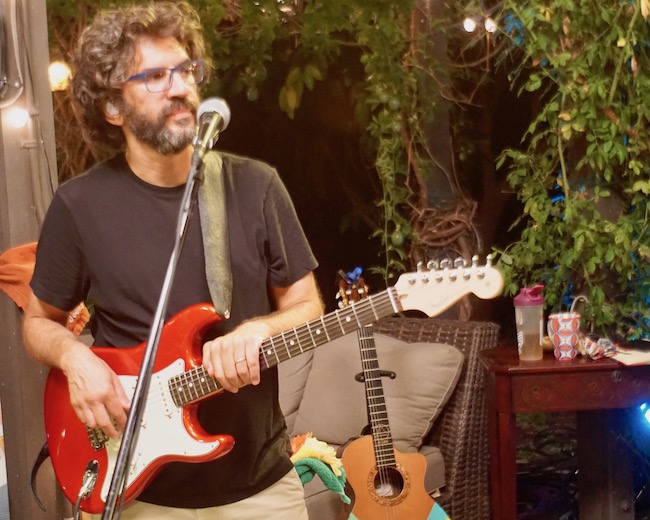
Goldwasser has been an instrumental producer for the label's roster and remixes, in addition to songwriting and playing with the Easy Star All-Stars, along with his solo work. Most recently, he produced Jason Mraz's Look for the Good, where the pop singer-songwriter who has long brought reggae inflections to his work fully embraces the genre.
Today, we're getting a double-treat from Goldwasser: the launch of The Official Easy Star Records Reverb Shop and a peek into Mraz's home studio, where Goldwasser and Mraz co-wrote and created the Look for the Good.
The Easy Star Reverb Shop features an Akai MPC 2000XL, a Kurzweil K2000 and other instruments and effects used throughout Goldwasser's career, including a Fender Stratocaster played on Mraz's latest. A portion of the proceeds from this shop will go to support the Alpha Boys School.
Click the link above to visit The Official Easy Star Records Reverb Shop now. Below, here straight from Goldwasser about the setup he and Mraz used on Look for the Good.
Jason’s studio has a great vibe. First of all, it’s situated on his farm, surrounded by nature and beauty. There’s a lot of natural light inside and sometimes we even recorded with the doors open to let the air and sunshine in. It was a lot different than many of my experiences recording in high-level studios in New York City and Los Angeles because of the laid back, nature-loving vibes, and I think that comes through in the music.
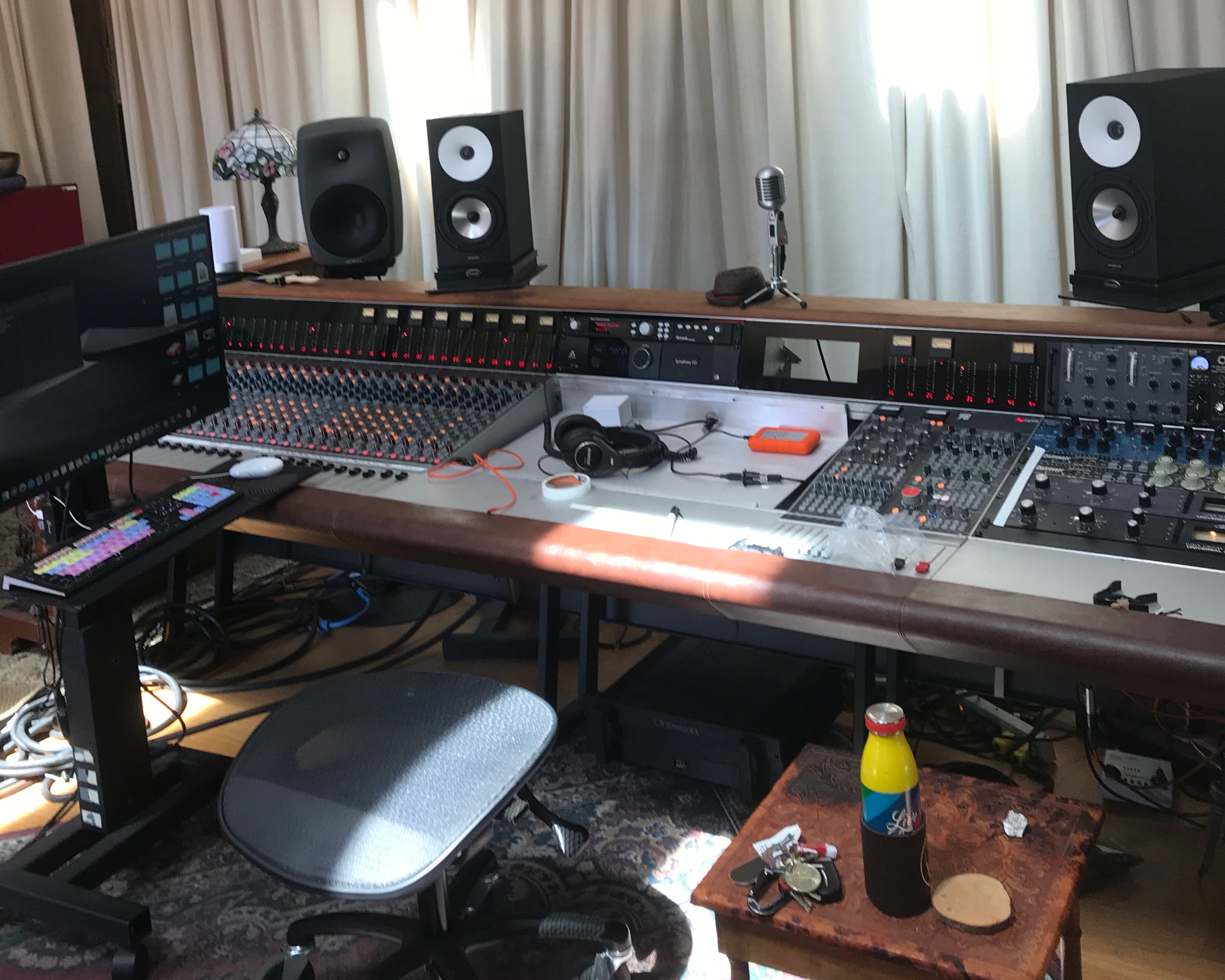
One of the unique things about Jason’s studio is that the console is in the live room. While this forced us to use headphones for monitoring while tracking, which is not usually my preference as producer, it allowed me to play my parts live in the same room with the band and still be able to easily communicate with Jeff, the engineer, and have access to the board. And after takes if we wanted the whole band to listen on the monitors, everyone could stay in their places, which allowed us to quickly jump back into another take without everyone having to leave the control room, go back to their stations, and get re-situated.
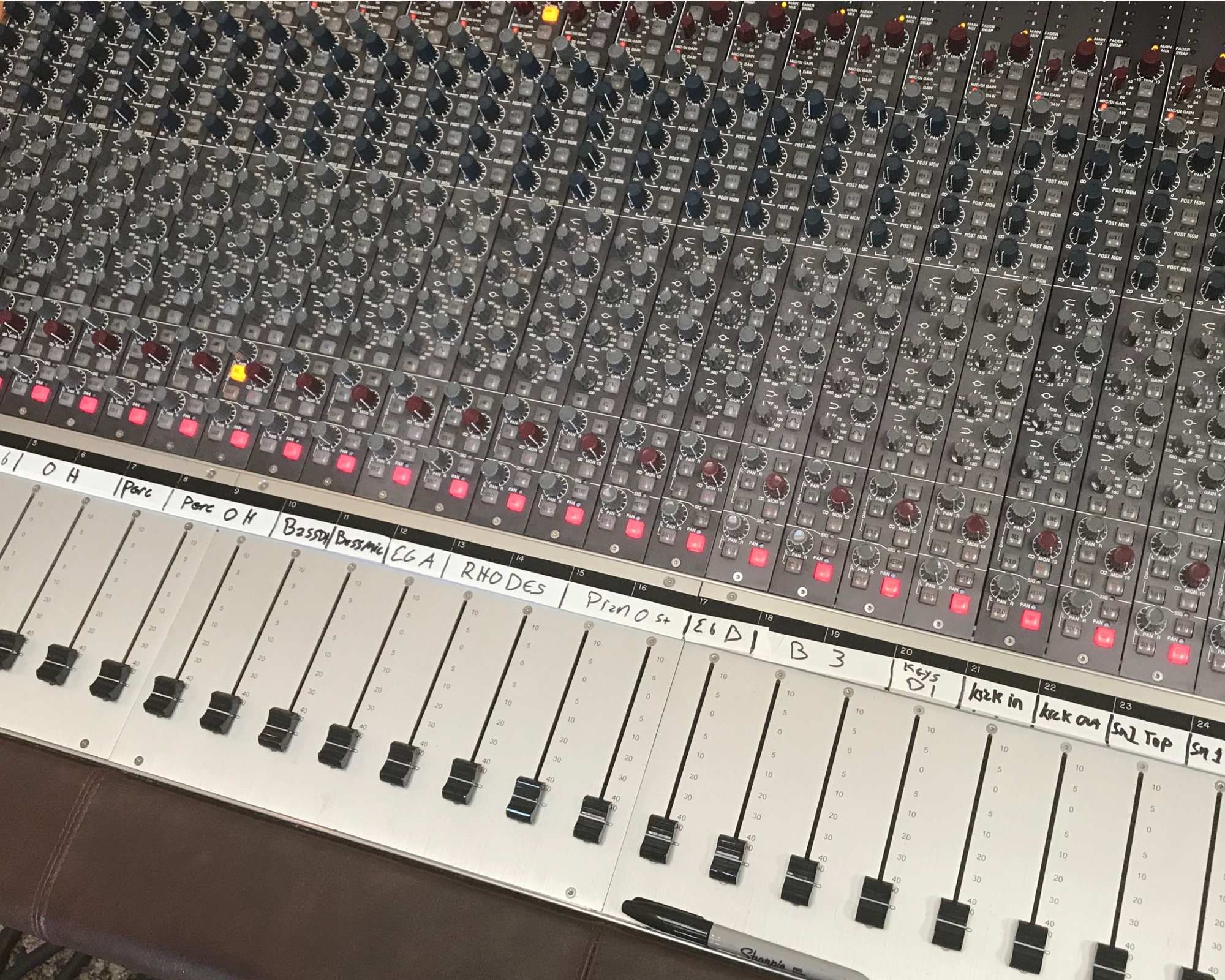
This is a Neve Custom 75, 32 channels of 1073 Class A pre-amps and 32 1081 EQs. All of the channels were being used at the same time, as we tracked all of those parts live.
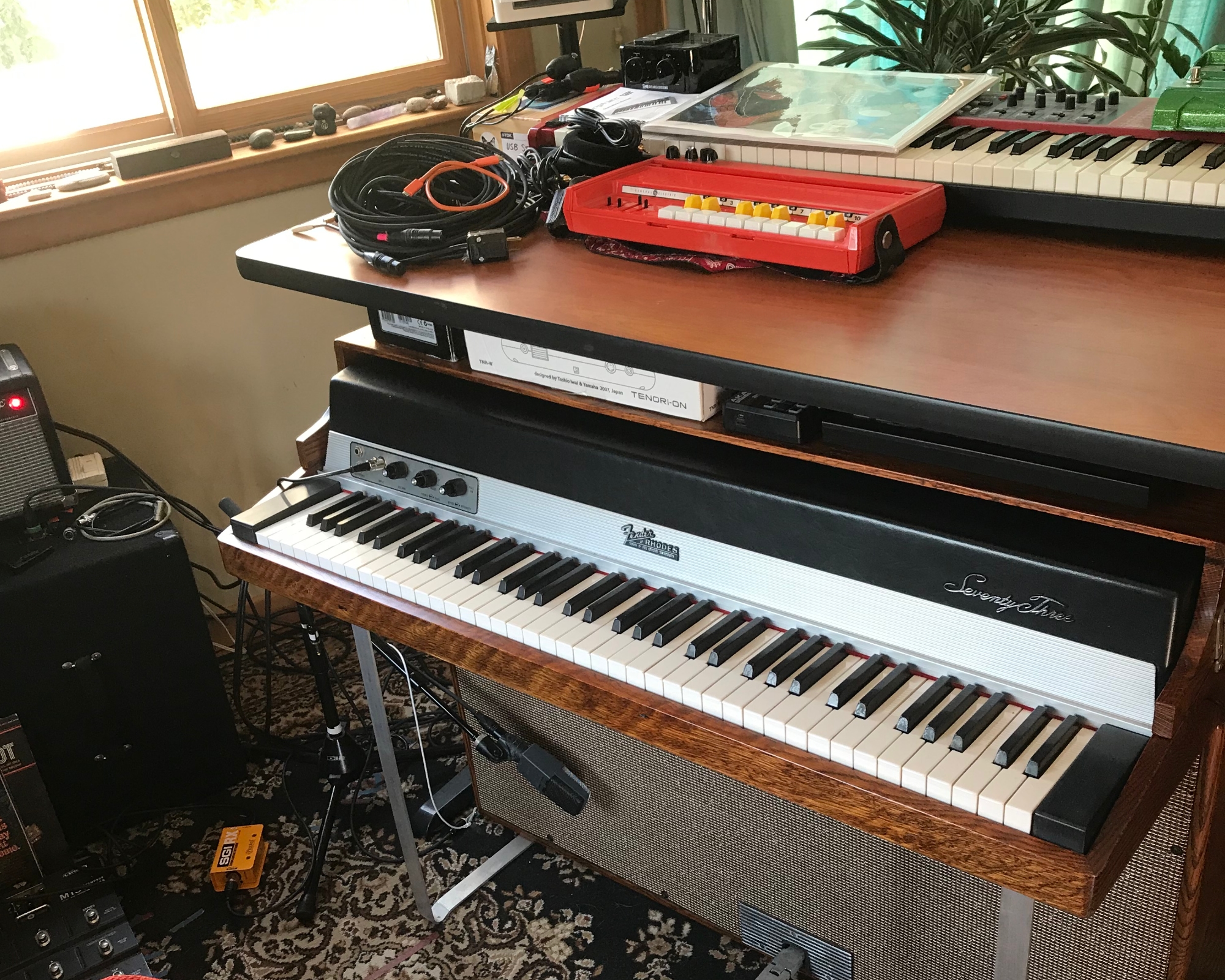
1974 Fender Rhodes Suitcase, custom-built for the studio. This is kept in the "office," which is next to the live room, where most of the keyboards live.
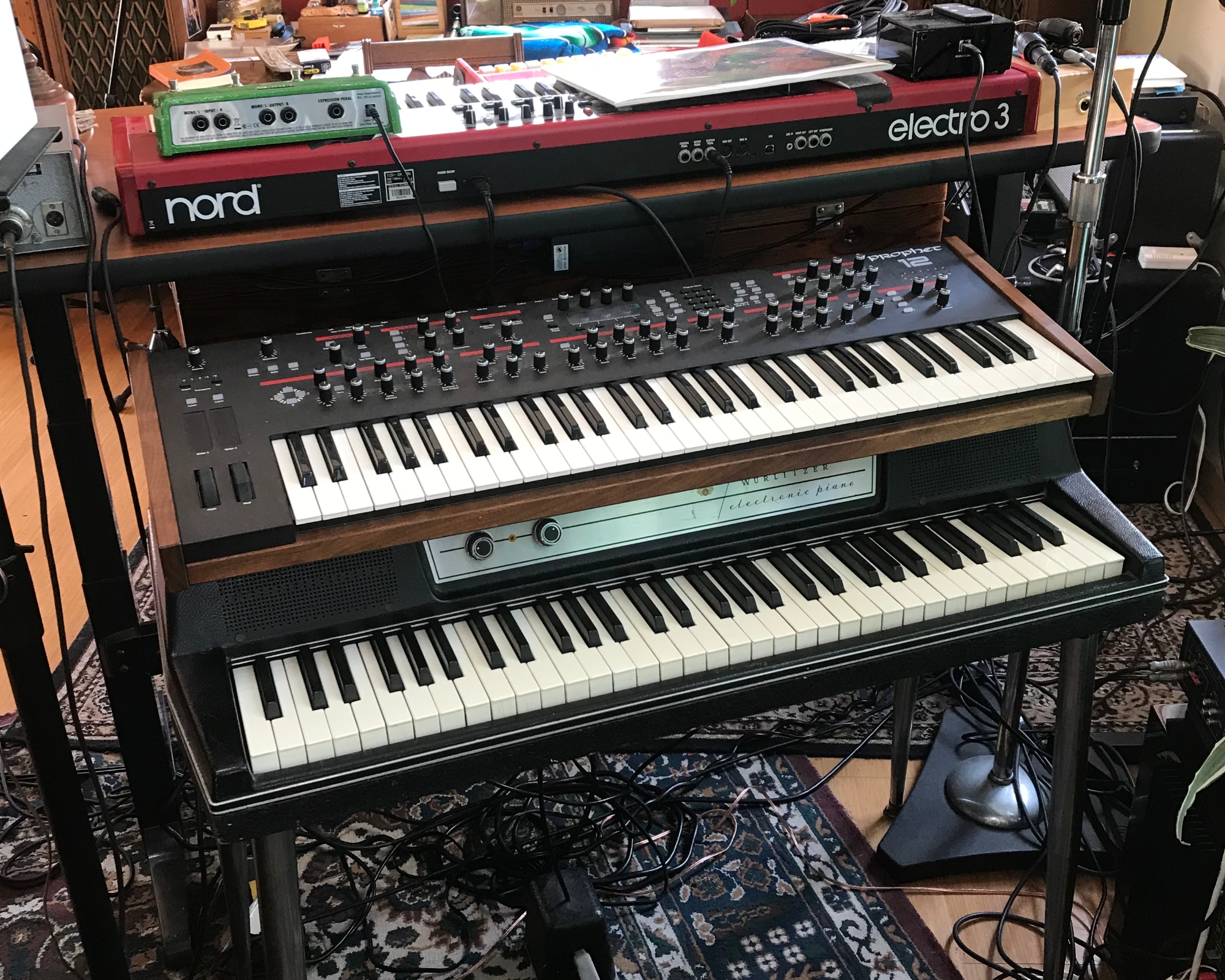
The only keyboard in this photo that we used on this album was the Wurlitzer electric piano, played by Daniel Mandelman on a few tunes. This rig was set up in the office.
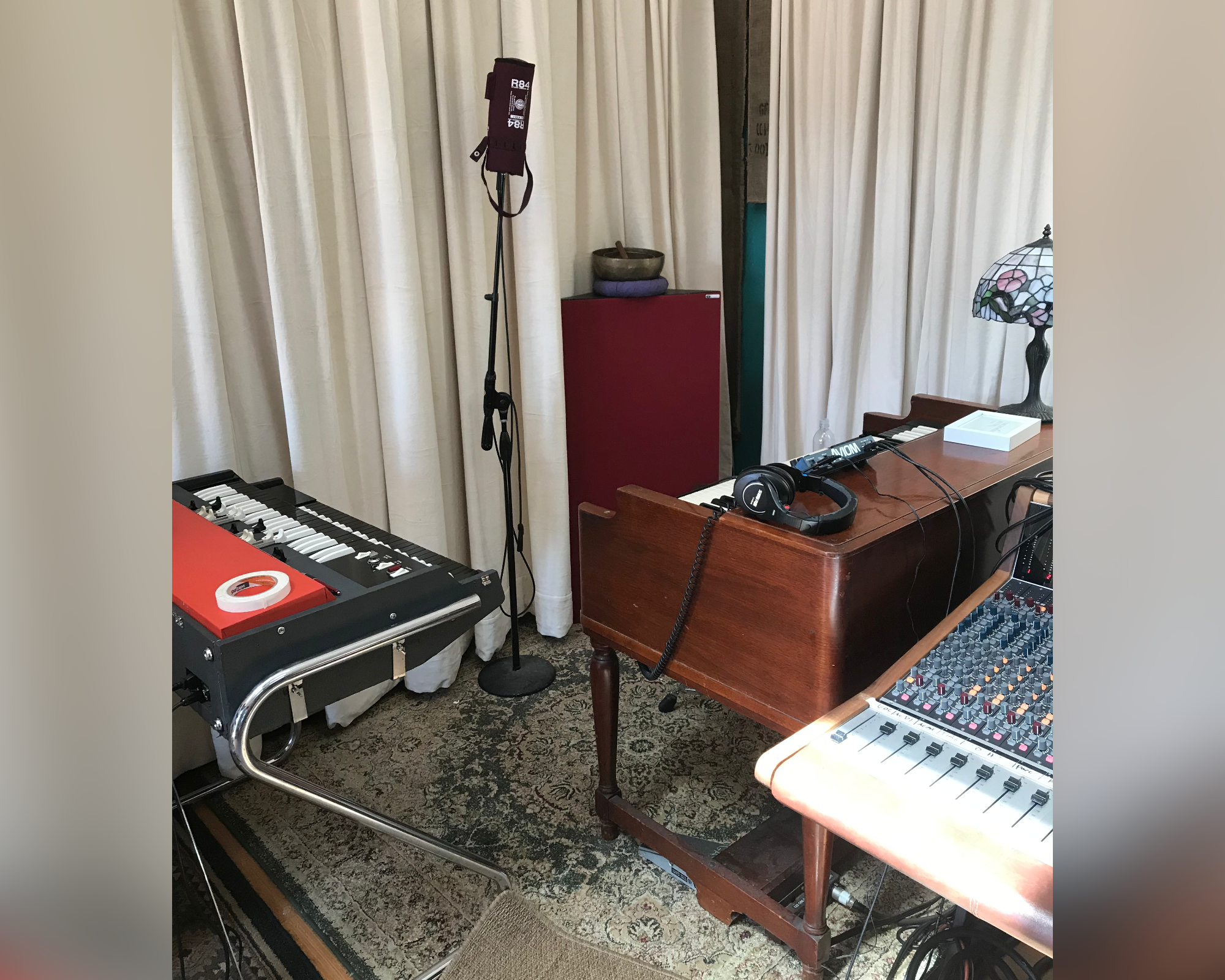
In this corner we had the Hammond B3, which was the main organ used on the album by Roger Rivas, and to his right we had a Vox Super Continental, which he played on a couple of songs. The B3 was connected to a Leslie speaker in the office.
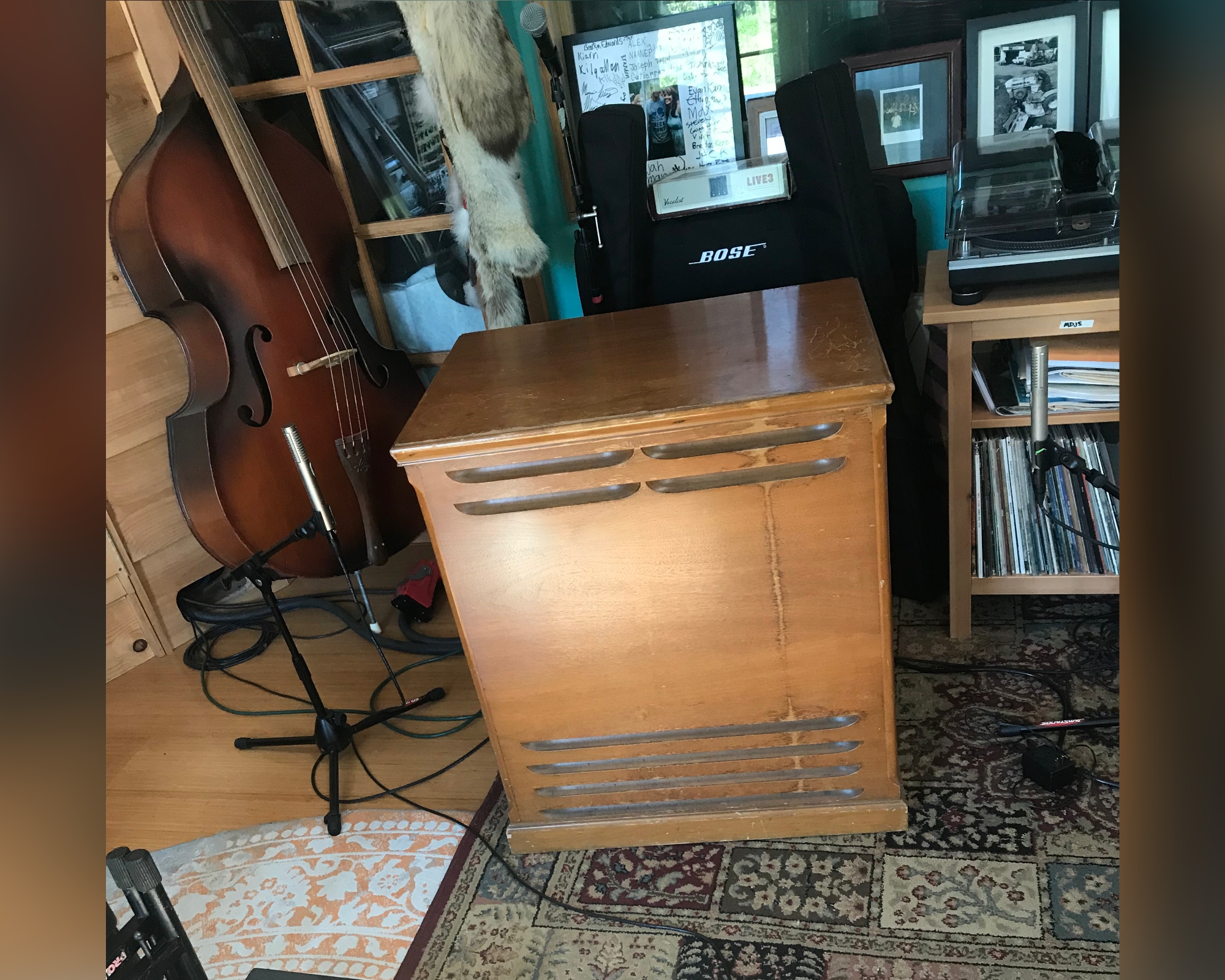
The Leslie lives in the office. The sound of a Hammond B3 played through a Leslie was essential for the authentic reggae vibe.
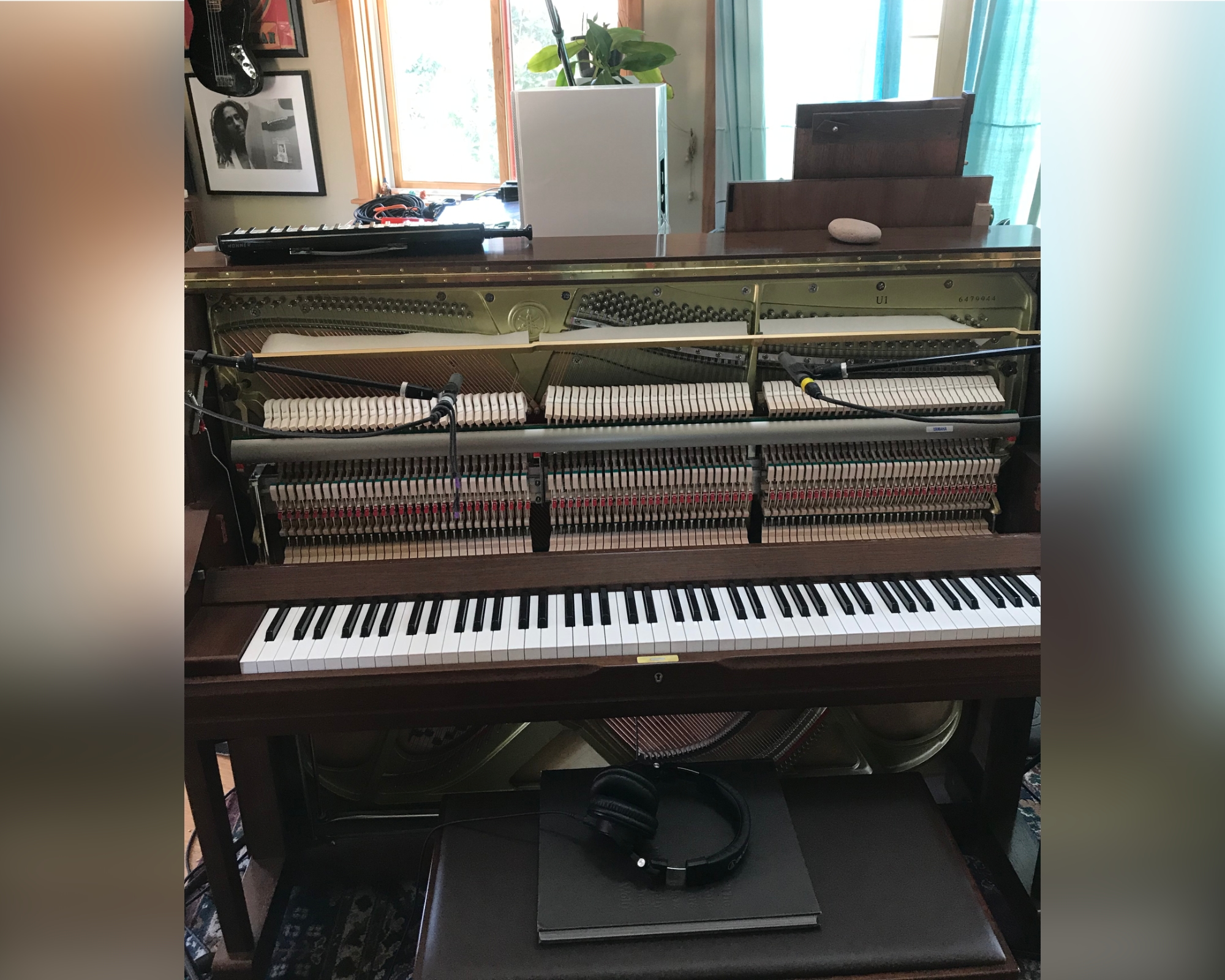
2019 Yamaha U1SAW Piano, also in the office. Played by Daniel Mandelman. While it was a brand-new instrument, we were able to get a classic reggae upright sound by creative mic'ing, and it also helped when it got slightly out-of-tune after a couple of days!
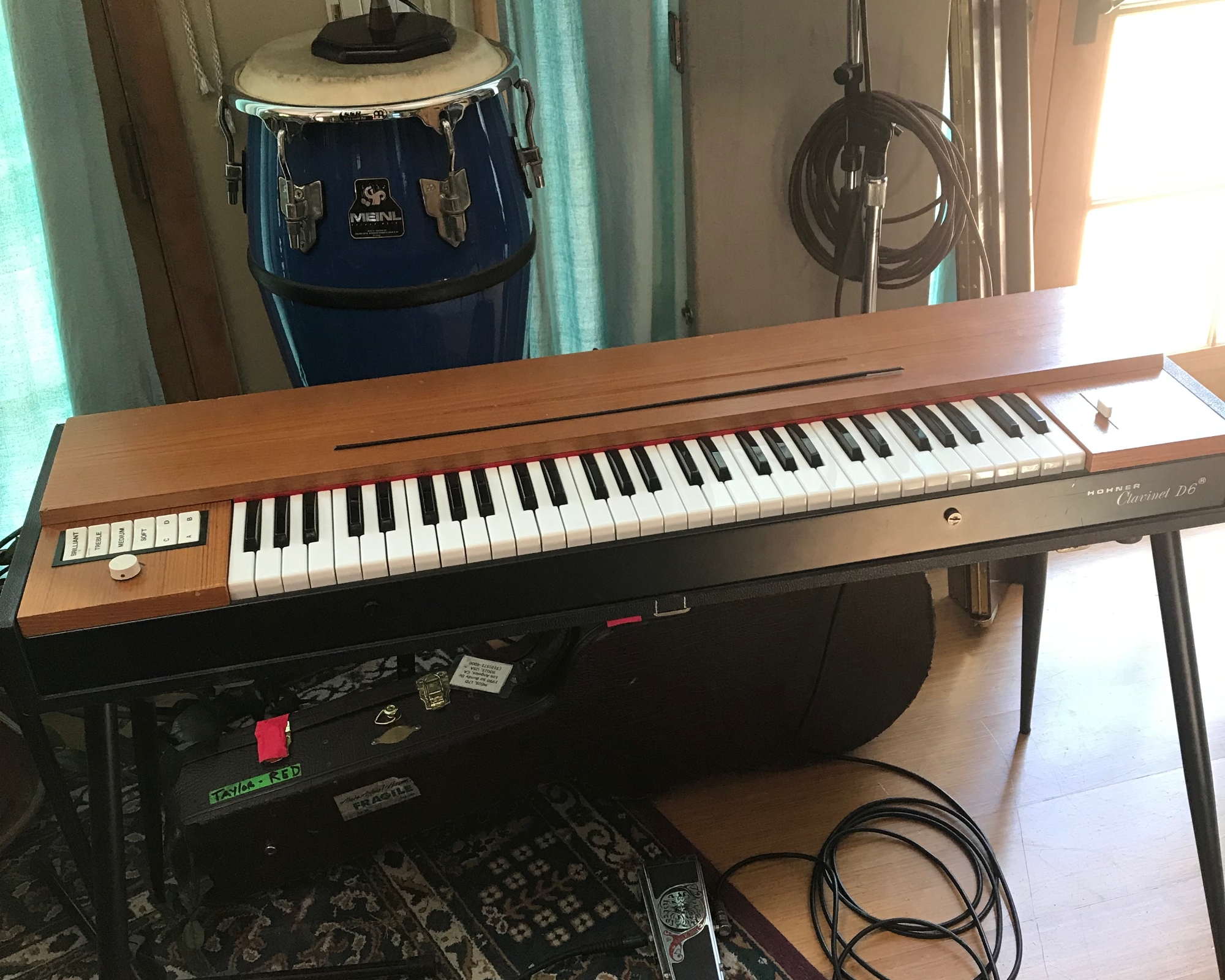
This Hohner Clavinet lives in the office. It was featured pretty prominently on the album, played by Daniel Mandelman. The clavinet was a big part of the sound of some of my favorite early-'70s reggae and I really wanted to capture that on this album.
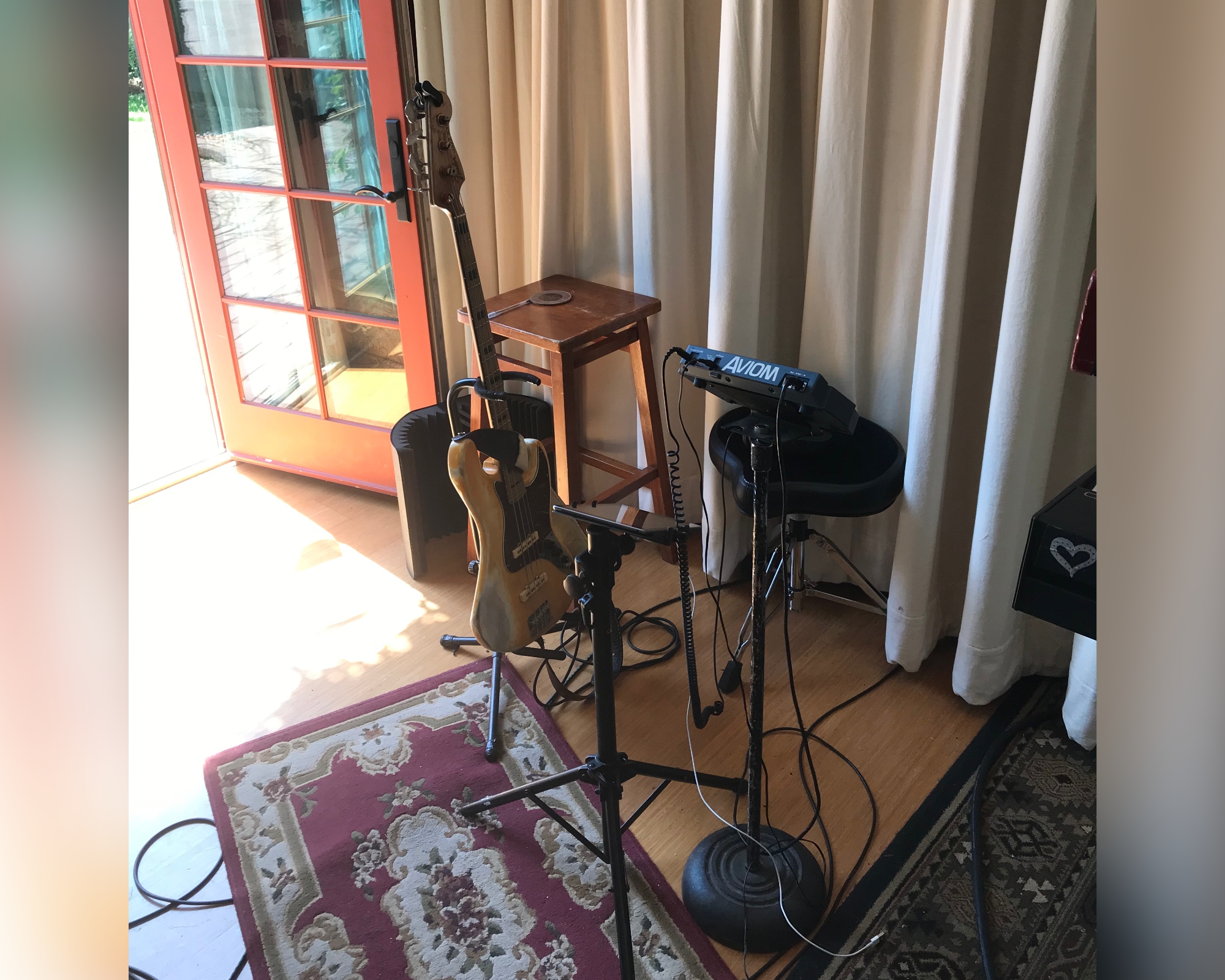
1973 Fender Jazz with DiMarzio pickups, Labella nylon flatwounds. This bass was used on over half of the songs, played by Andre de Santanna. Chiqius Lozoya also played bass on the album, using a Fender Precision.
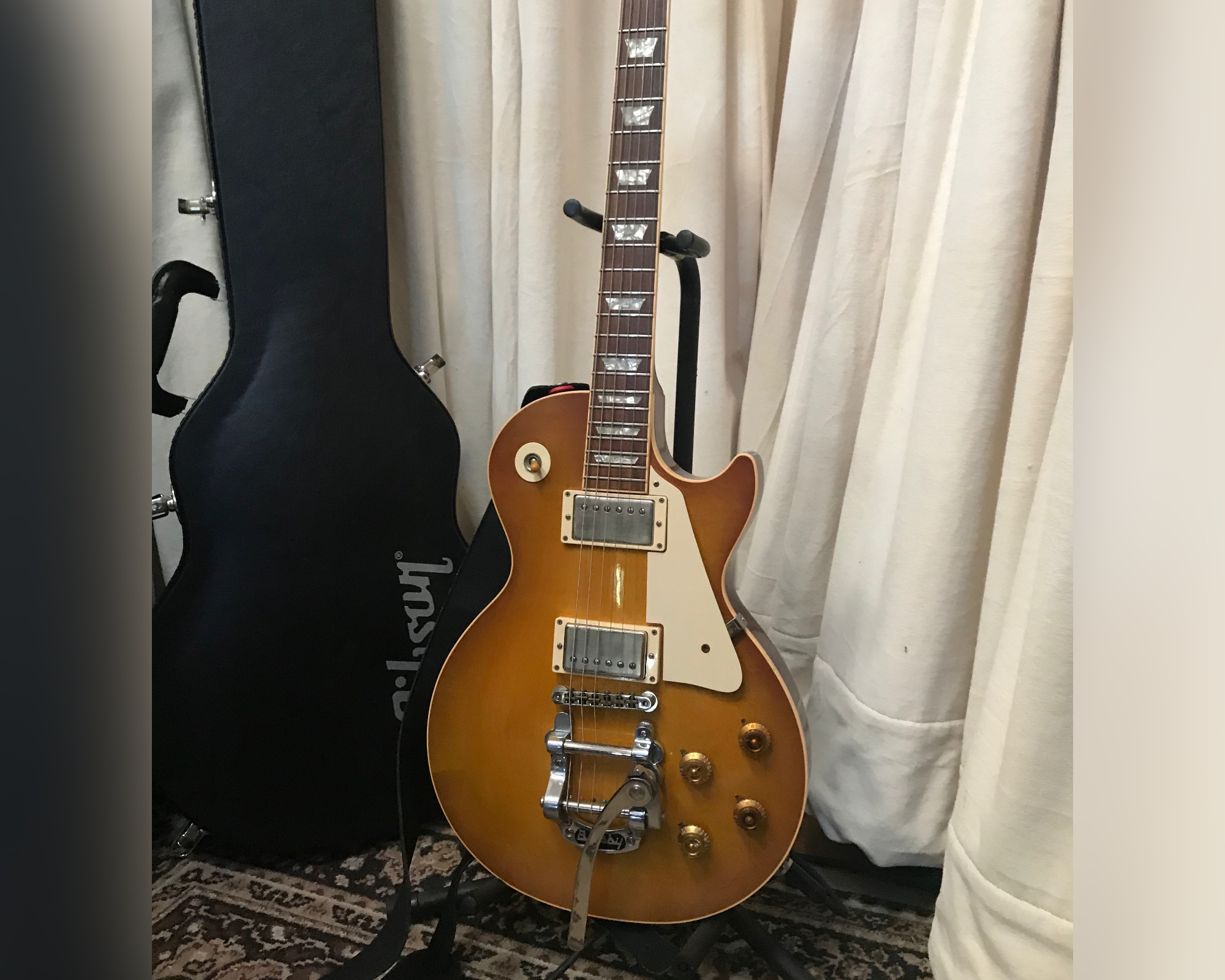
1972 Les Paul with Lollar pickups. I played this guitar on several of the tracks. One of the other guitarists, Stephen Suckarie, also used it on a song or two.
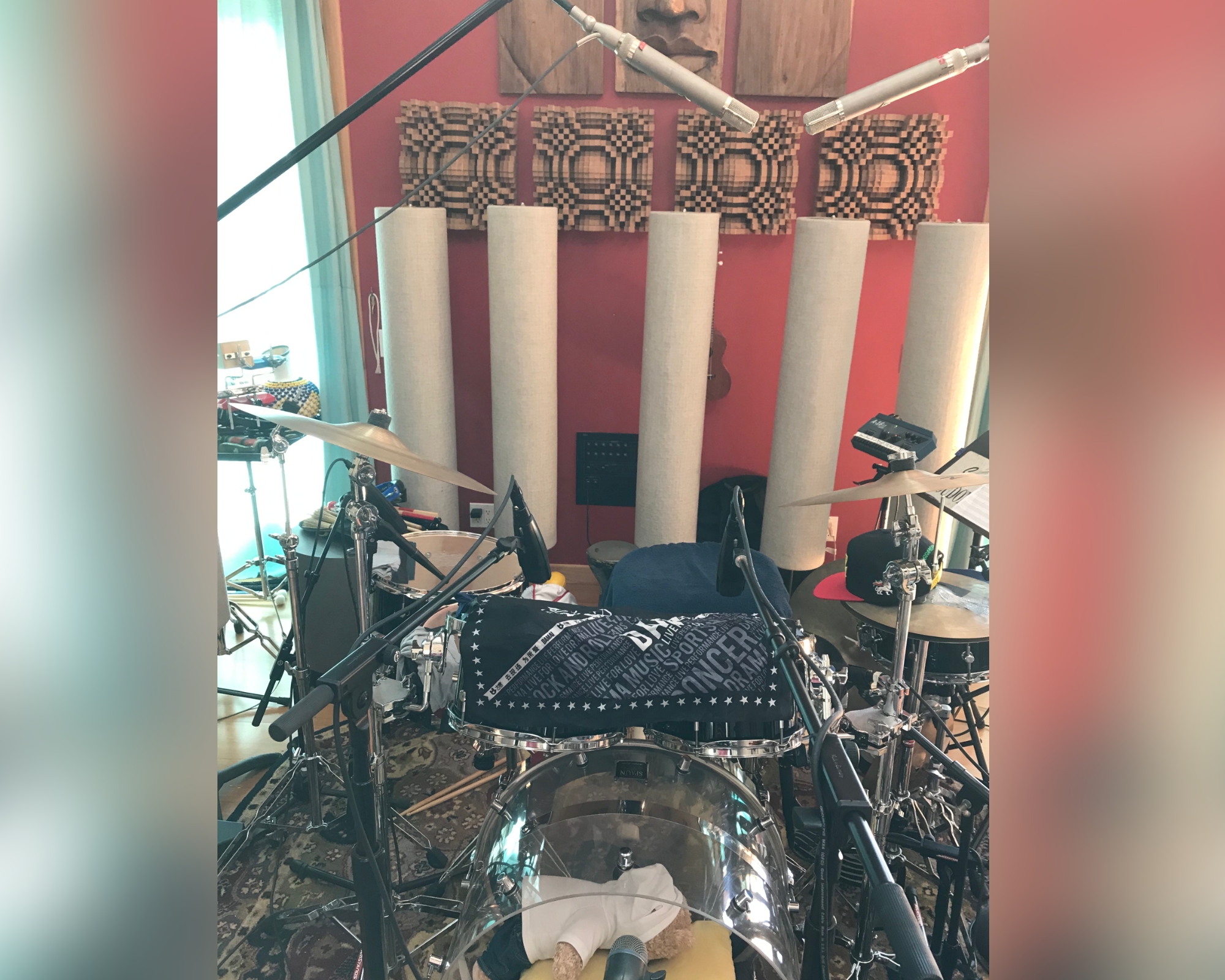
This is a custom-made Spaun kit. Brian Spaun brought it over and personally set it up. The kick, floor tom, and rack toms were made by Spaun and we used a variety of snares. The timbale was a converted snare as well.
To get the reggae vibes there were no bottom heads on the toms and lots of dampening on the toms and the snare, as you can see from the photo. Drums on the album were played by Tamir Barzilay and John Asher.
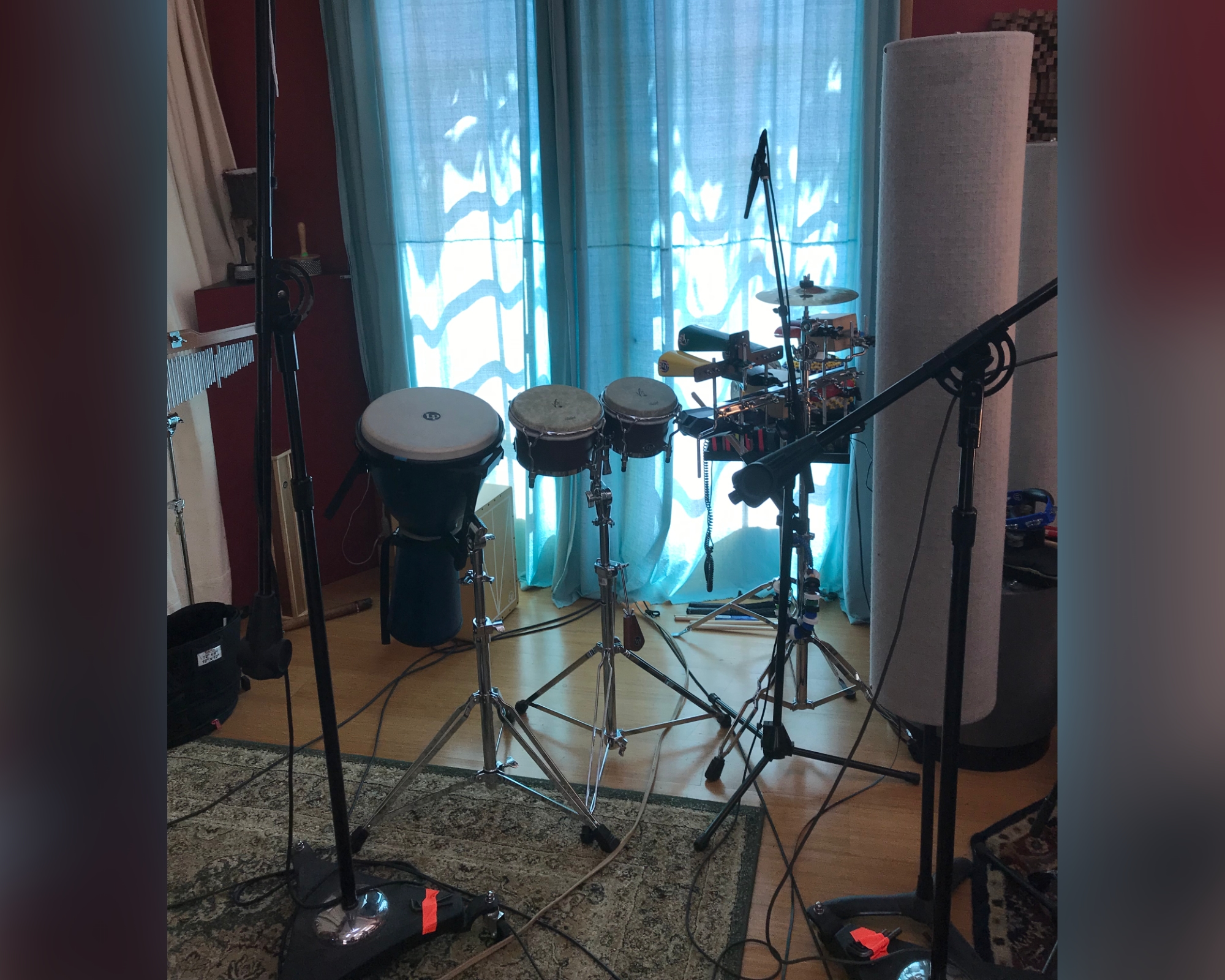
This is Mona Tavakoli’s percussion rig, all LP instruments. It was set up in the live room for quick overdubs during basic tracking, played by Mona, myself, and our two drummers, Tamir Barzilay and John Asher.
Visit The Official Easy Star Records Reverb Shop now. To buy or stream Mraz's Look for the Good click here.
